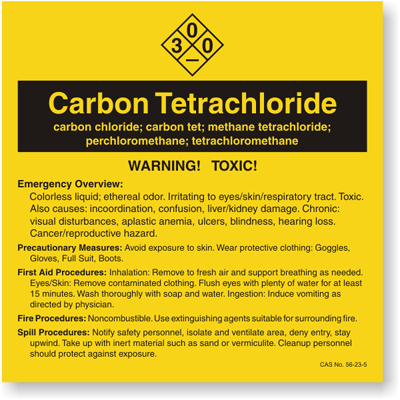Introduction
There are more than 200 different species of mushrooms, most of which are toxic and can be found natively in tropical and subtropical climates. Even though mushroom poisonings can result from the misidentification of a poisonous species, the majority are due to intentional ingestions.
A classification system has been established to group the mushrooms based on clinical effect, taxonomy and phenotype. Please click here for a comprehensive overview of all 15 mushroom classifications (Groups 1 – 15). In the interest of time, we will be looking more closely at psilocybin-containing mushrooms, or “magic mushrooms” (Group 6).
Biotransformation and MOA (1)

Image source
The psychoactive component of Group VI mushrooms, psilocybin, is rapidly and completely hydrolyzed to psilocin in vivo. Once converted to psilocin, psilocybin exhibits agonistic and antagonistic actions on 5-hydroxytryptamine (5-HT) receptors. The figure to the left shows how psilocybin and psilocin are structurally similar to serotonin. Through agonistic activation of 5-HT2a receptors (high affinity) and 5-HT1 receptors (low affinity), psilocybin causes several psychotomimetic effects.

Image source
Binding to the 5-HT receptors can prevent the reuptake of serotonin (causing increased synaptic activation of receptors) or block the activity of serotonin (resulting in depressive activity). Serotonin receptors are located in several critical areas of the brain.
Toxicokinetics
Toxicological profile of poisonous, edible and medicinal mushrooms here.
Target organs:
Psilocybin-containing mushrooms target the CNS and GI. Mushroom classifications exert different systemic effects. Click here for a comprehensive overview of target organs by mushroom classification.
Carcinogenicity
Mushrooms contain trace amounts of carcinogenic compounds in raw form. The following compounds have been linked to mushroom species:
- Agaritine (AGT) is a group 3 carcinogen found in the mushroom species Agaricus (4)
- Formaldehyde is a naturally occurring compound found in shiitake mushrooms (5)
- Hydrazine found in portobello mushrooms (4)
Biomarkers & Mushroom Identification
- Diagnosis must be made upon clinical presentation
- There are no tests or labs available to identify or quantify total ingested dose
- Unable to use HPLC, TLC, GC, or GC-MS
- Symptomatology assessment should be made by mycologist or toxicologist
- Most important anatomical features of edible and poisonous mushrooms (1):
- Pileus: broad, caplike structure from which hang the gills, tubes or teeth

Image Source
- Stipe: long stalk or stem that supports the cap (not present in all species)
- Lamellae (or gills): structures found on the undersurface of pileus. How the lamellae attaches to the stipe is key for a positive identification
- Volva: partial remnant of the vein found around the base of the stipe (not present in all species)
- Pileus: broad, caplike structure from which hang the gills, tubes or teeth
If Mushroom is Unknown… (1)
- Triage: Immediately confirm whether ingested mushroom is of the high-morbidity species based on anatomical features and clinical symptoms
- Collect and transport:
- Attempt to either collect either the mushroom, a photo, or a detailed description of its features
- Transport mushroom in dry paper bag (cannot be moistened or refrigerated)
- Spore print: make a spore print of the mushroom cap (if available) by placing pileus spore-bearing surface-side-down on a piece of paper for 4-6 hrs
- Spores will collect on paper and be analyzed by color
- White spore prints are more easily visualized
- Contact mycologist for proper identification
Signs and symptoms of toxicity (1, 2)
- CNS: ataxia, headache, nausea/vomiting, hyperkinesis, visual illusions, and hallucinations
- PNS: myalgia, weakness
- GI (onset <5 hrs): tachycardia, mydriasis, anxiety, lightheadedness, tremor and agitation. Return to normalcy within 6 – 12 hrs
- Rare: Acute kidney failure, seizures, cardiopulmonary arrest
Click here for a comprehensive overview of signs/symptoms.
Treatments for Group VI ingestion (1)
- Hospital admission: for anyone who shows GI symptoms and remains symptomatic for hours
- Hallucinations: benzodiazepines (supportive care)
- Ingestion: activated charcoal
- If nausea/vomiting persist, an antiemetic is recommended to ensure the patient can retain the activated charcoal
- Life-supportive measures: fluids, electrolytes, dextrose repletion
Summary
Resources
-
Goldfrank LR. Mushrooms. In: Nelson LS, Howland M, Lewin NA, Smith SW, Goldfrank LR, Hoffman RS. eds. Goldfrank’s Toxicologic Emergencies, 11e. McGraw-Hill; Accessed July 22, 2020. https://accesspharmacy-mhmedical-com.proxy.lib.ohio-state.edu/content.aspx?bookid=2569§ionid=210276854
- Tran HH, Juergens AL. Mushroom Toxicity. [Updated 2020 Mar 24]. In: StatPearls [Internet]. Treasure Island (FL): StatPearls Publishing; 2020 Jan-. Available from: https://www.ncbi.nlm.nih.gov/books/NBK537111/
- Jo WS, Hossain MA, Park SC. Toxicological profiles of poisonous, edible, and medicinal mushrooms. Mycobiology. 2014;42(3):215-220. doi:10.5941/MYCO.2014.42.3.215
- Hashida C, Hayashi K, Jie L, Haga S, Sakurai M, Shimizu H. Nihon Koshu Eisei Zasshi. 1990;37(6):400-405.
- Mason DJ, Sykes MD, Panton SW, Rippon EH. Determination of naturally-occurring formaldehyde in raw and cooked Shiitake mushrooms by spectrophotometry and liquid chromatography-mass spectrometry. Food Addit Contam. 2004;21(11):1071-1082. doi:10.1080/02652030400013326




